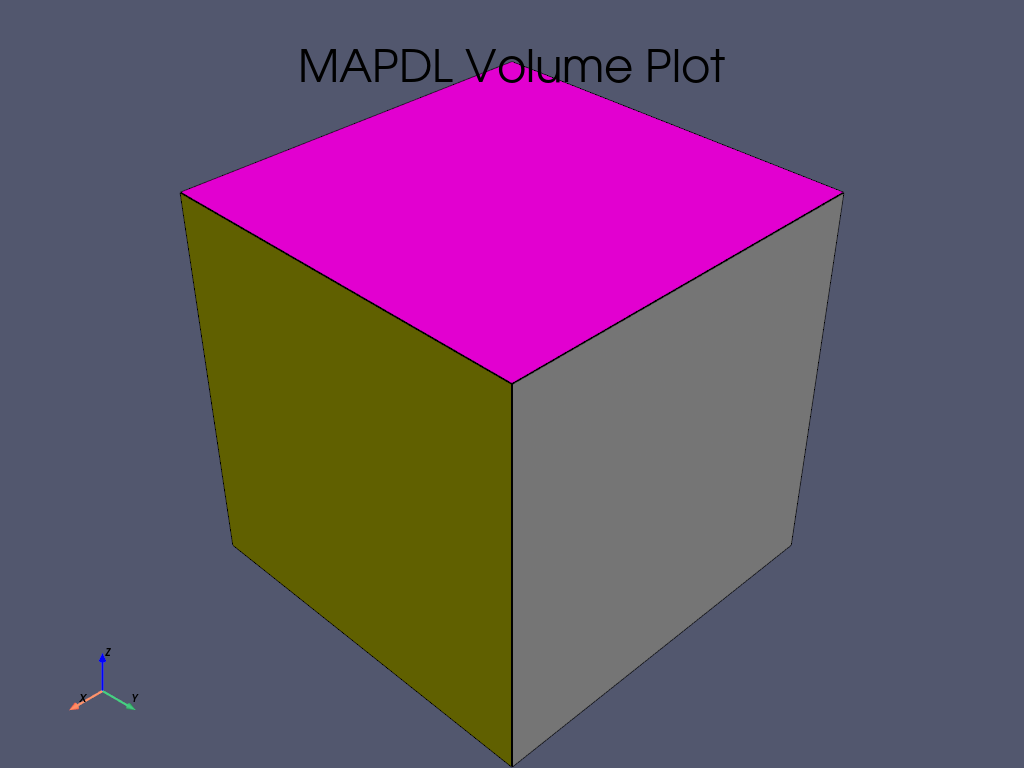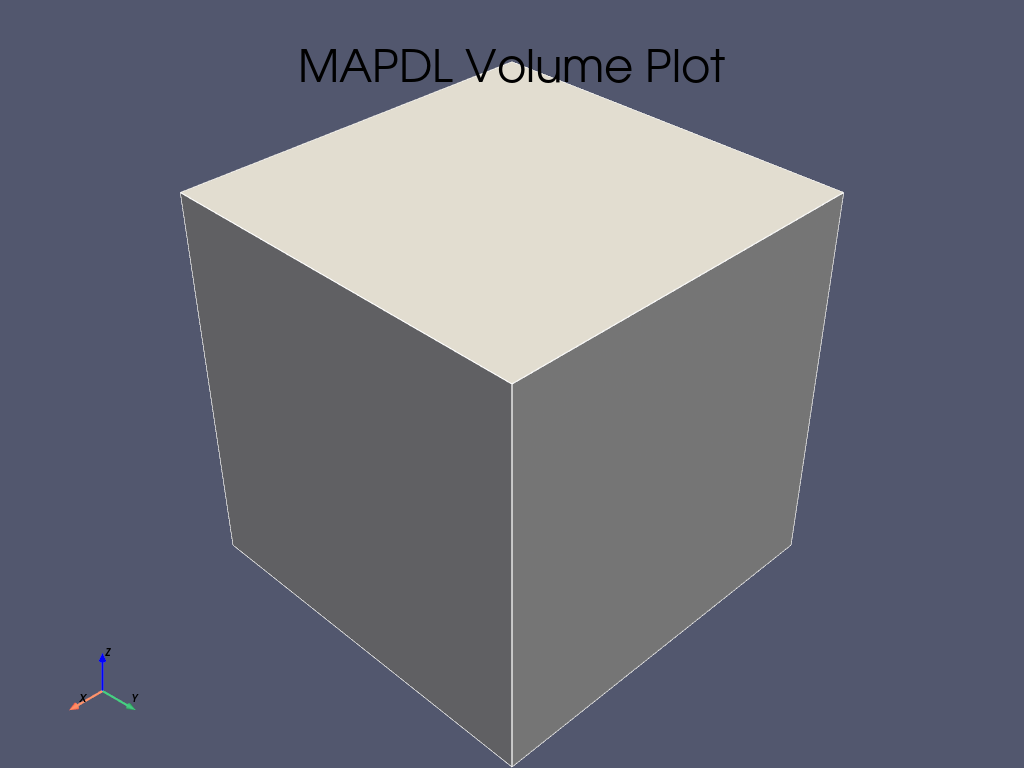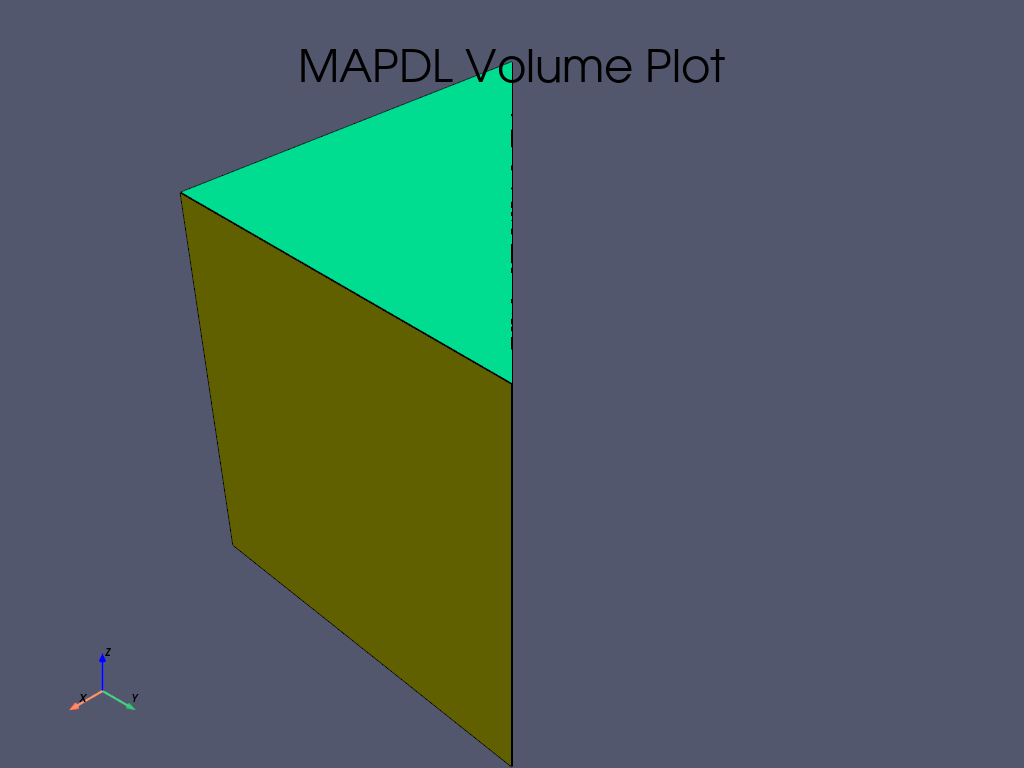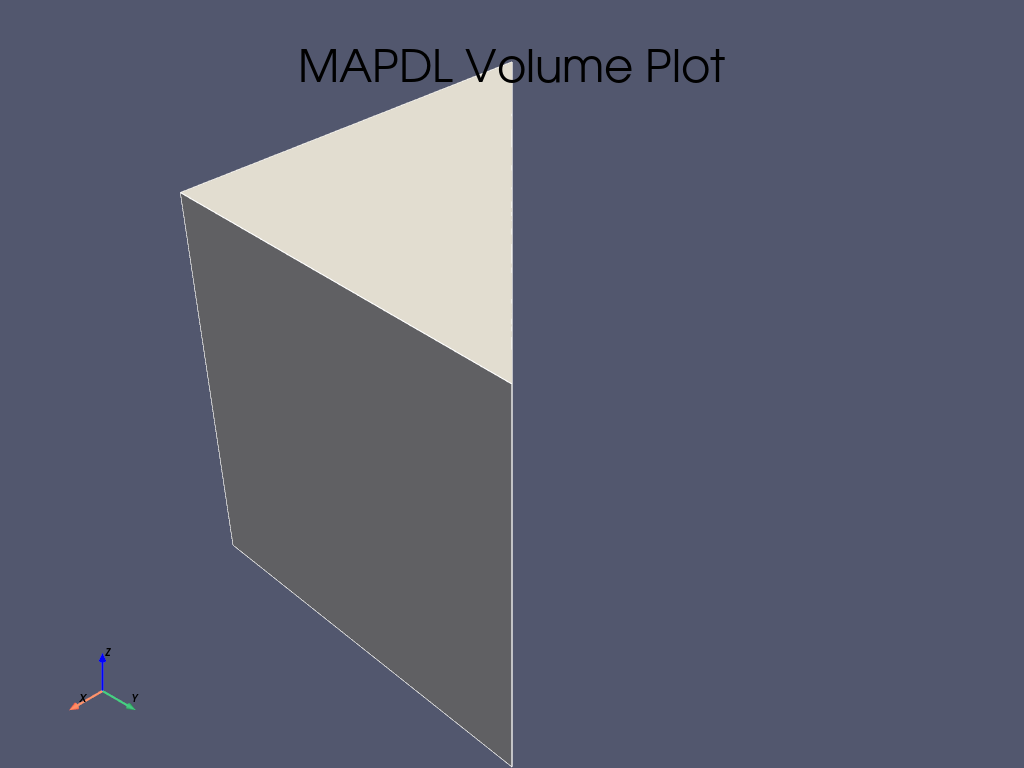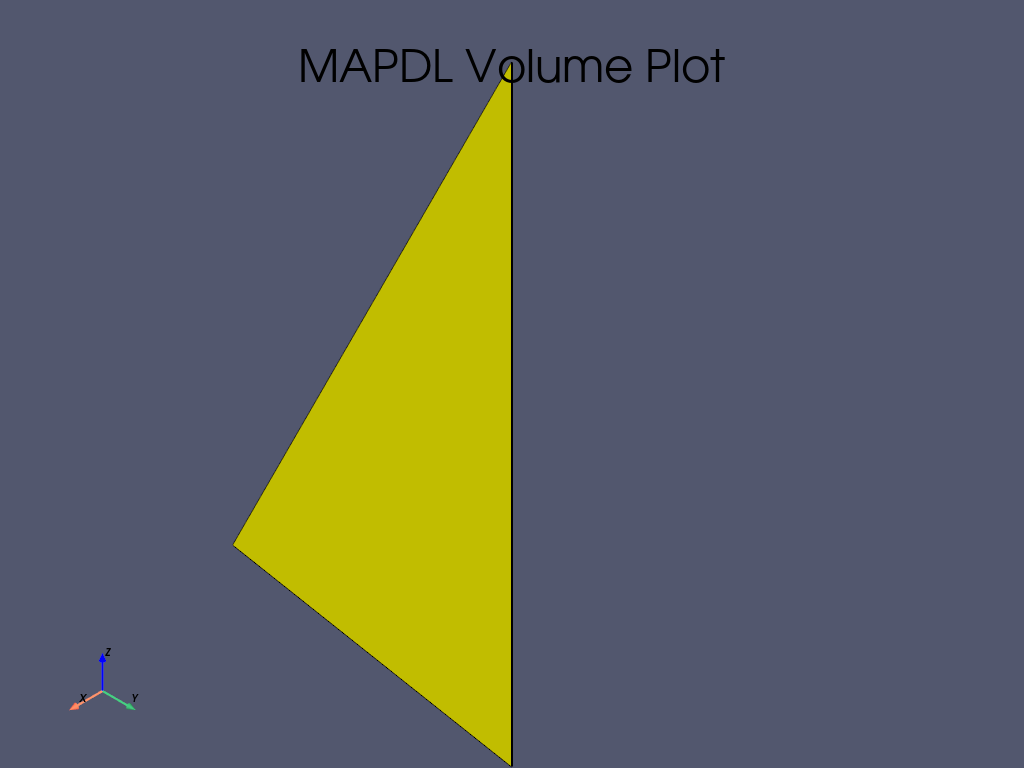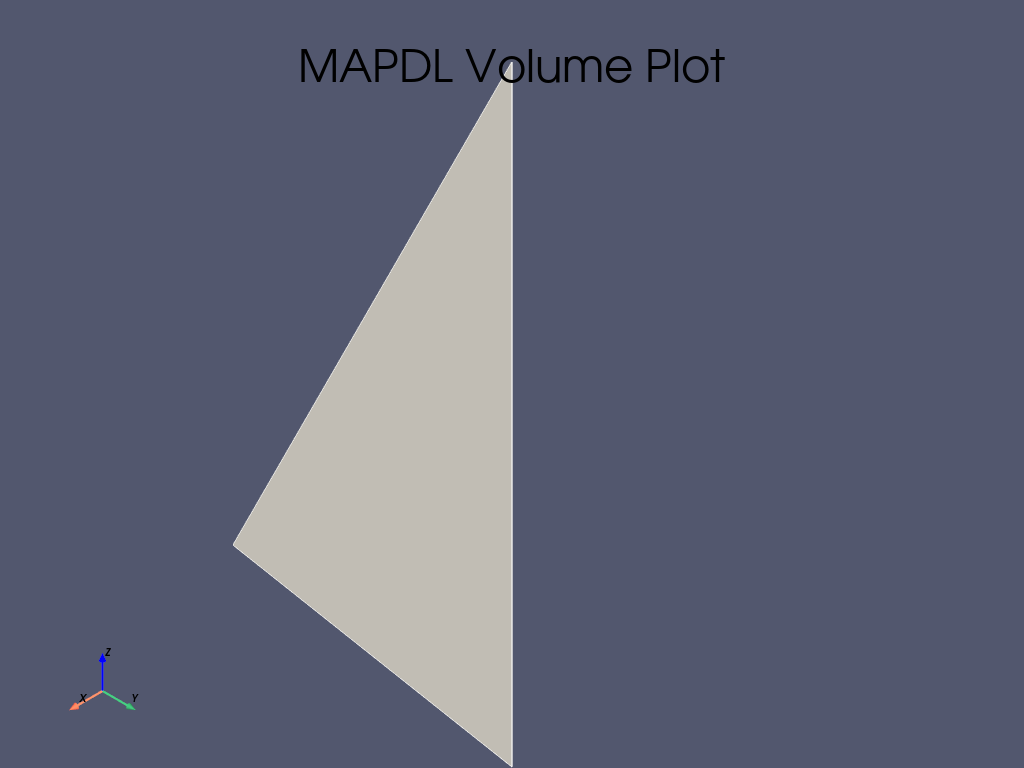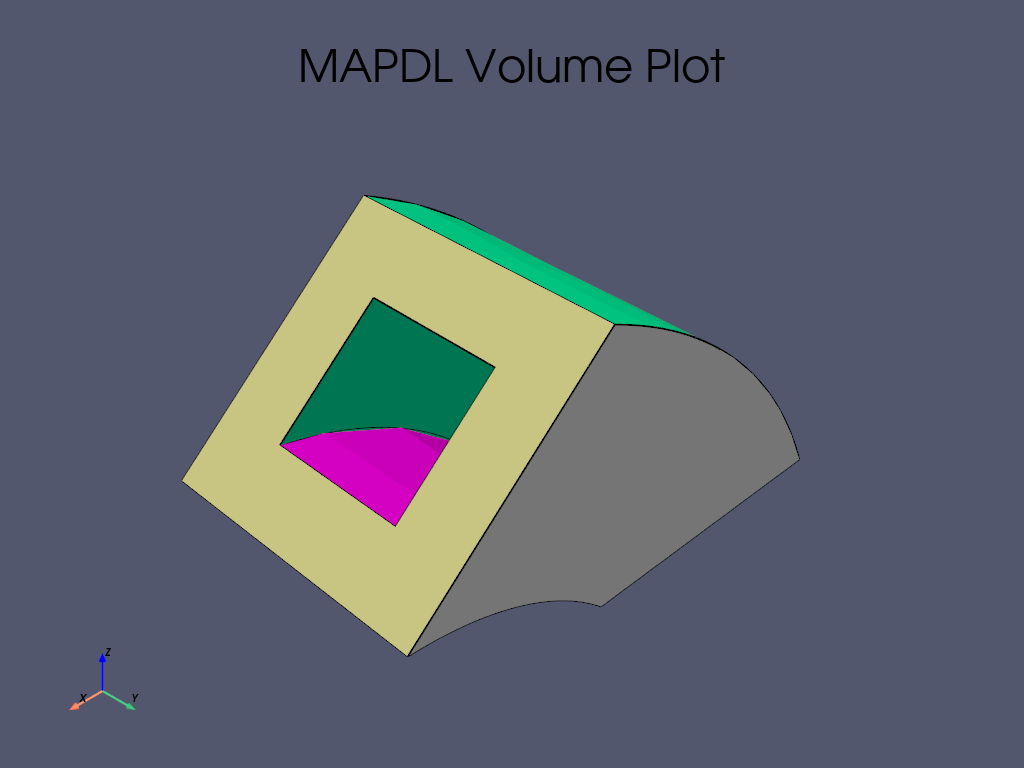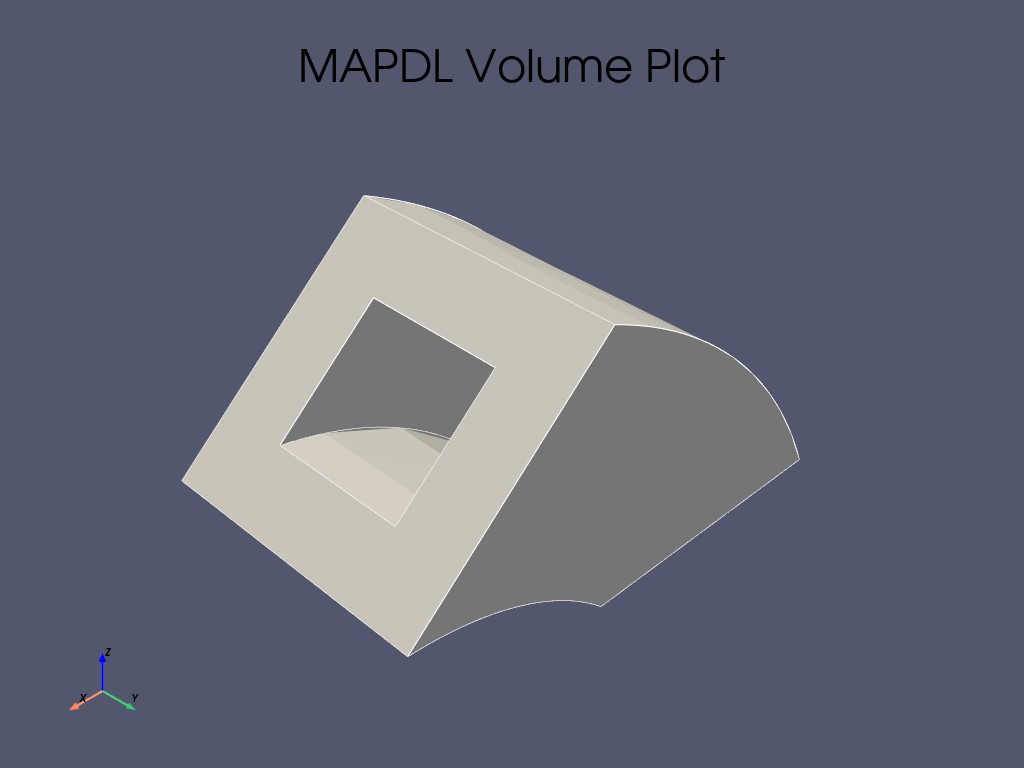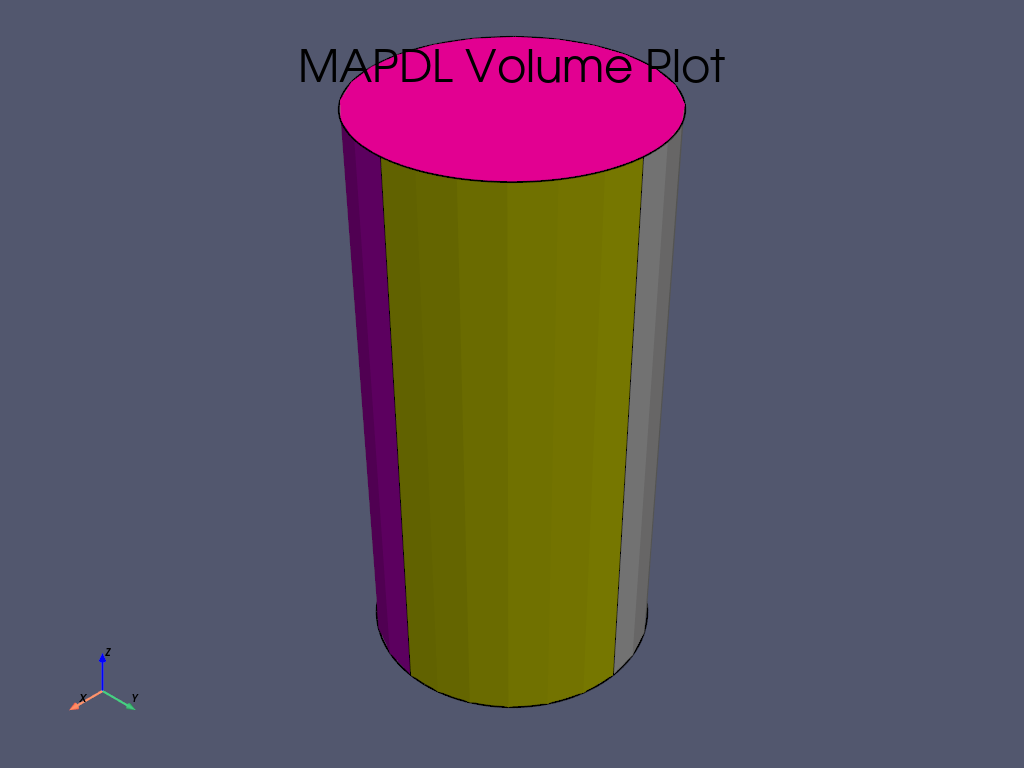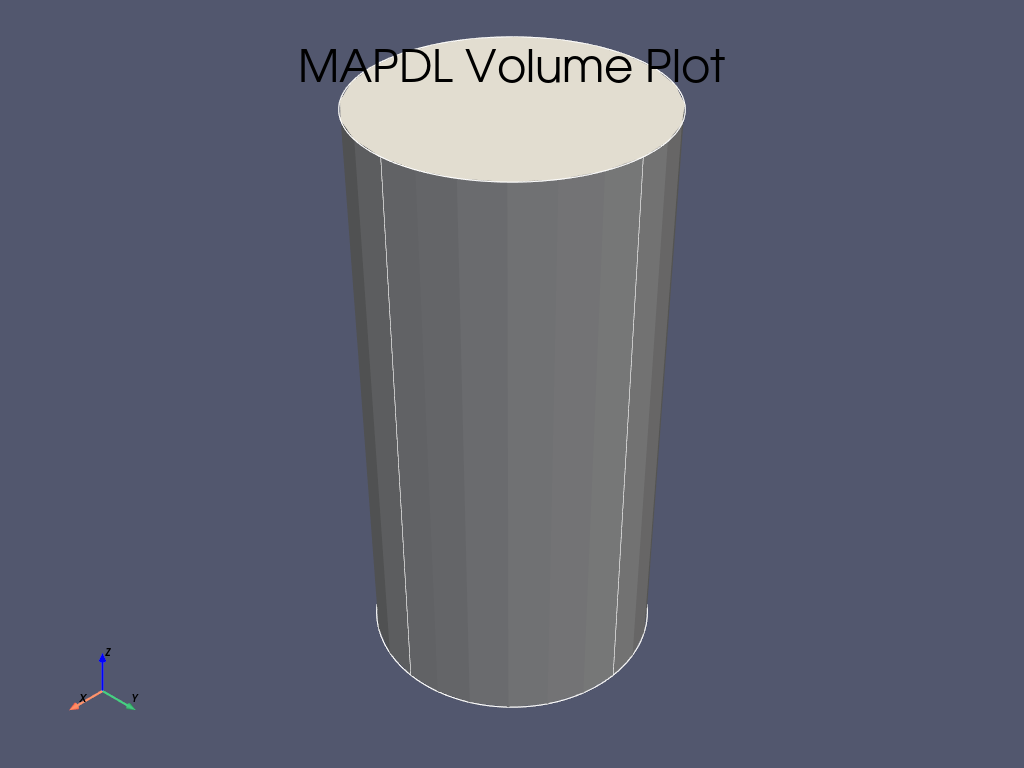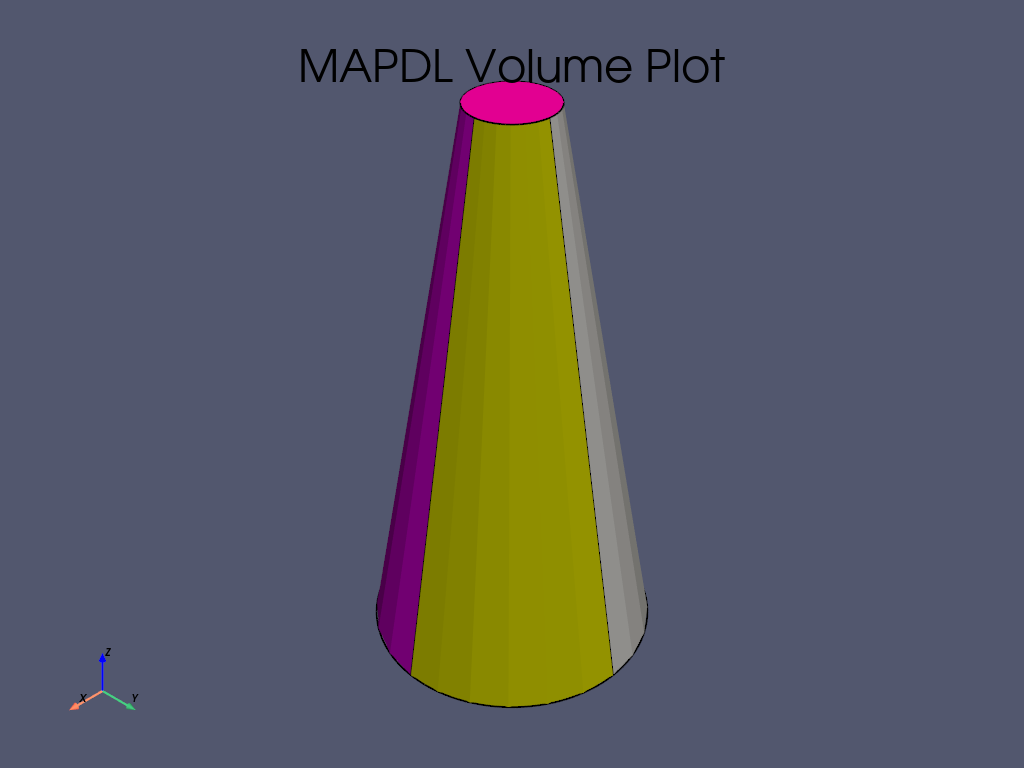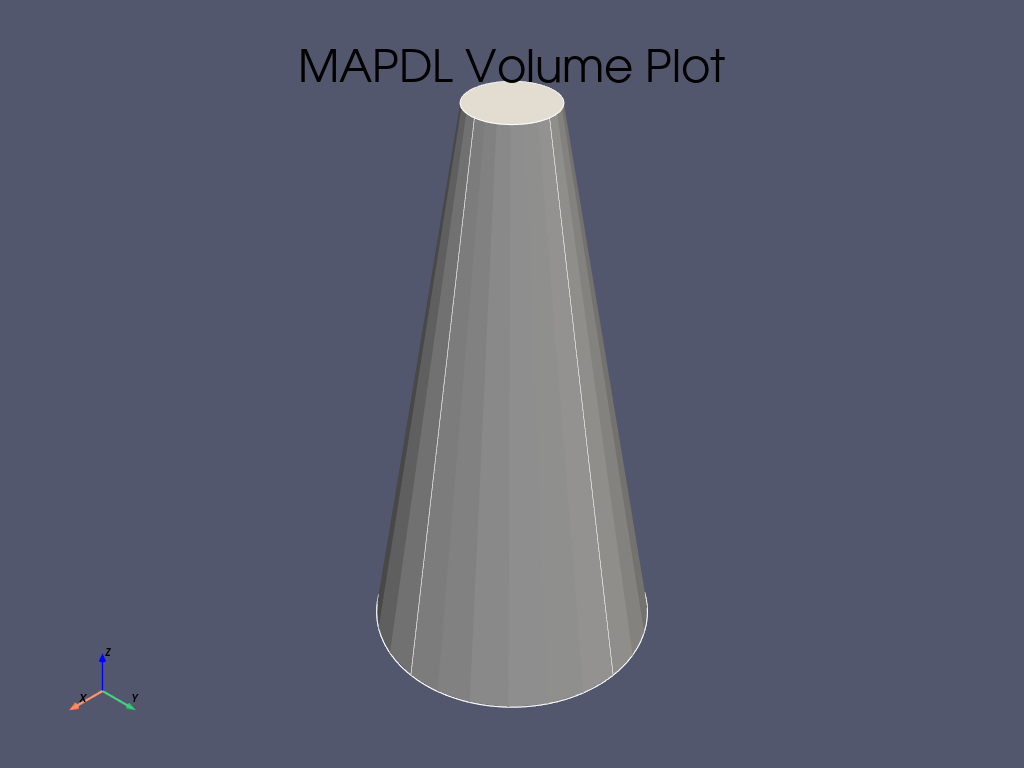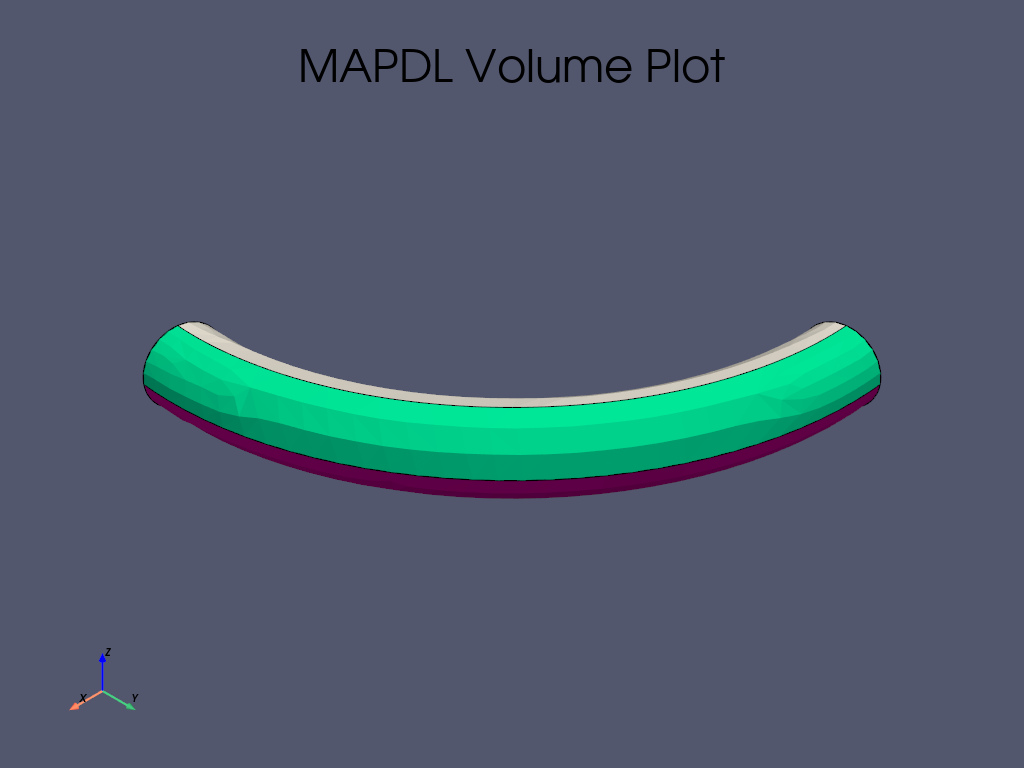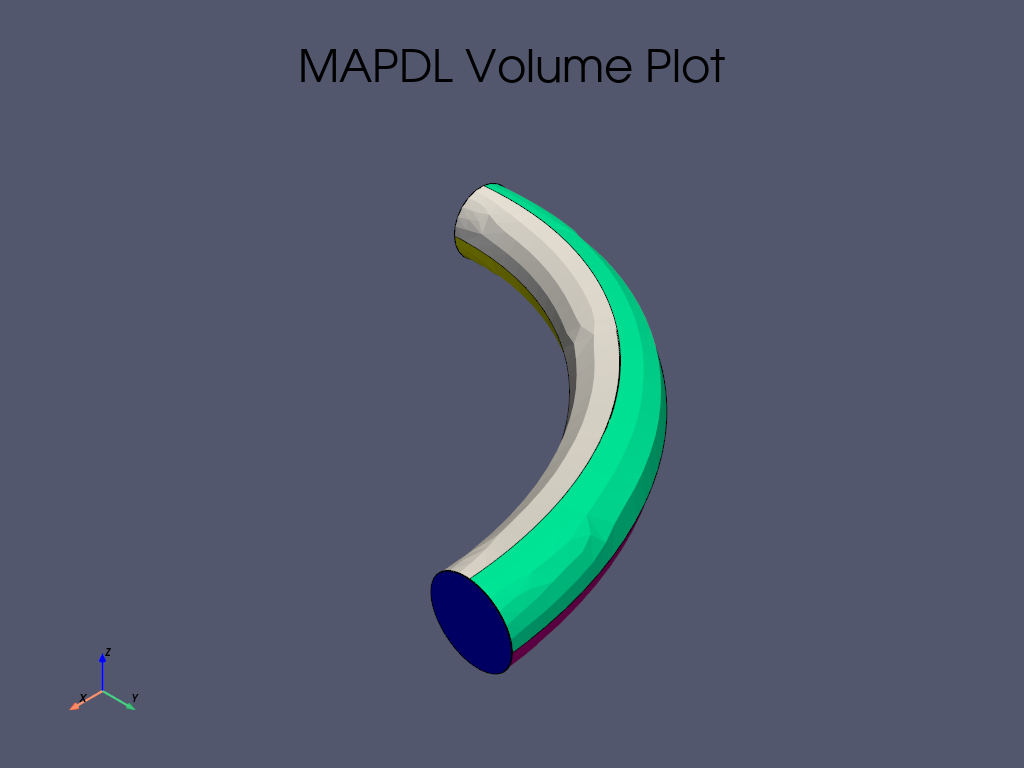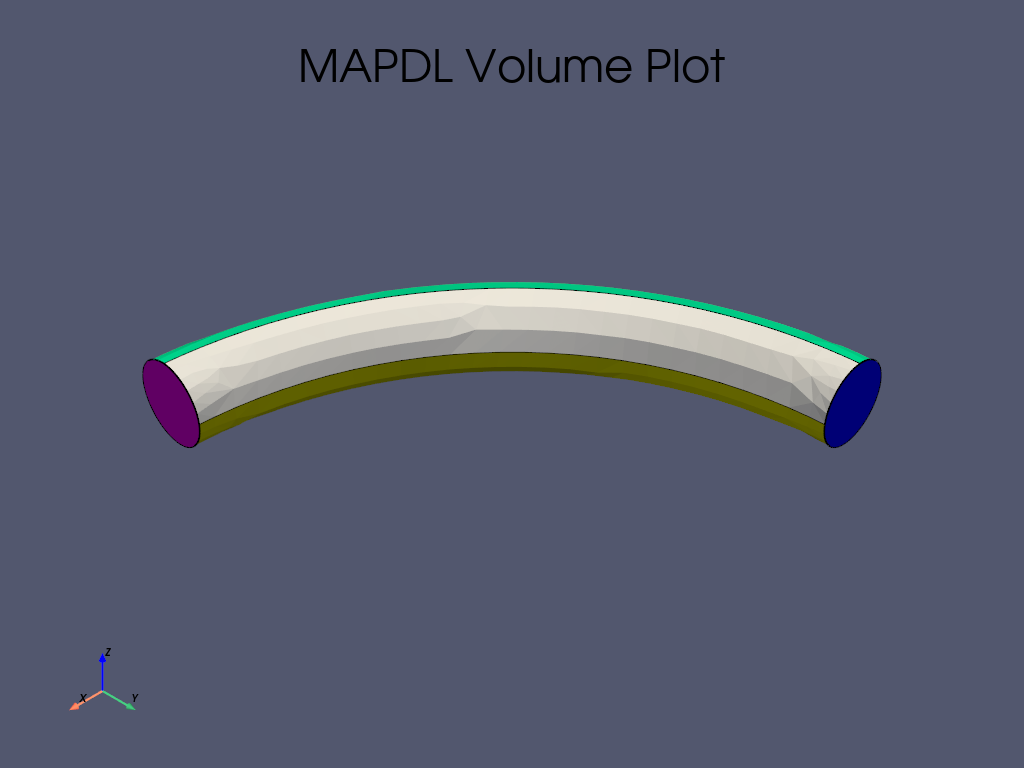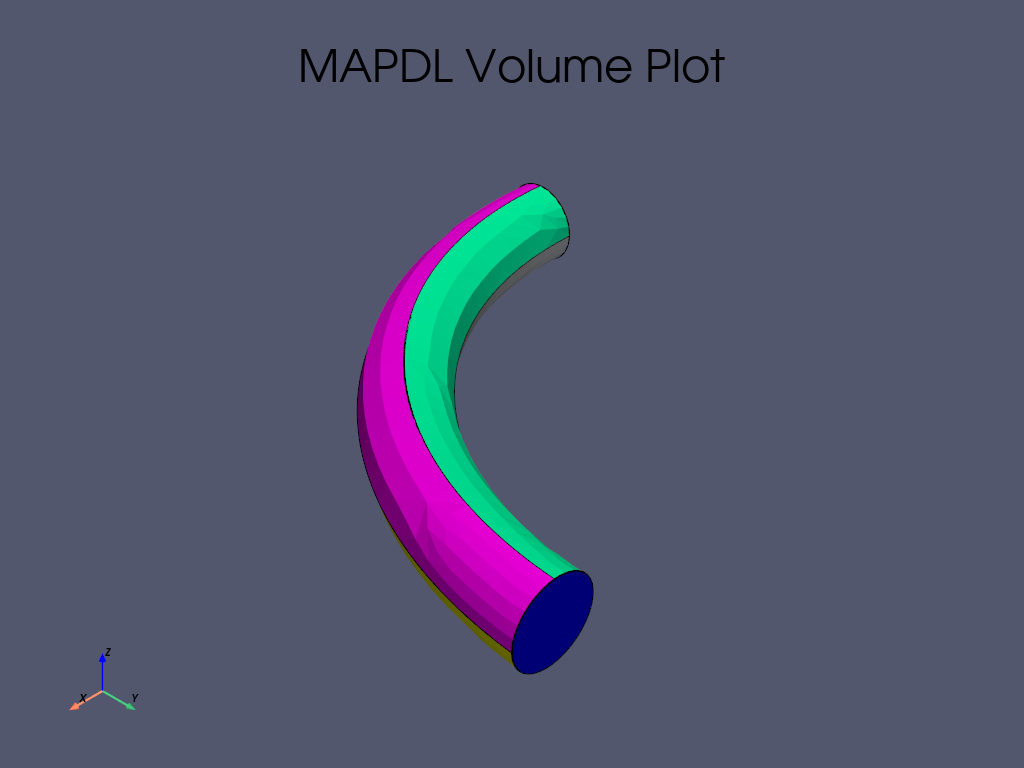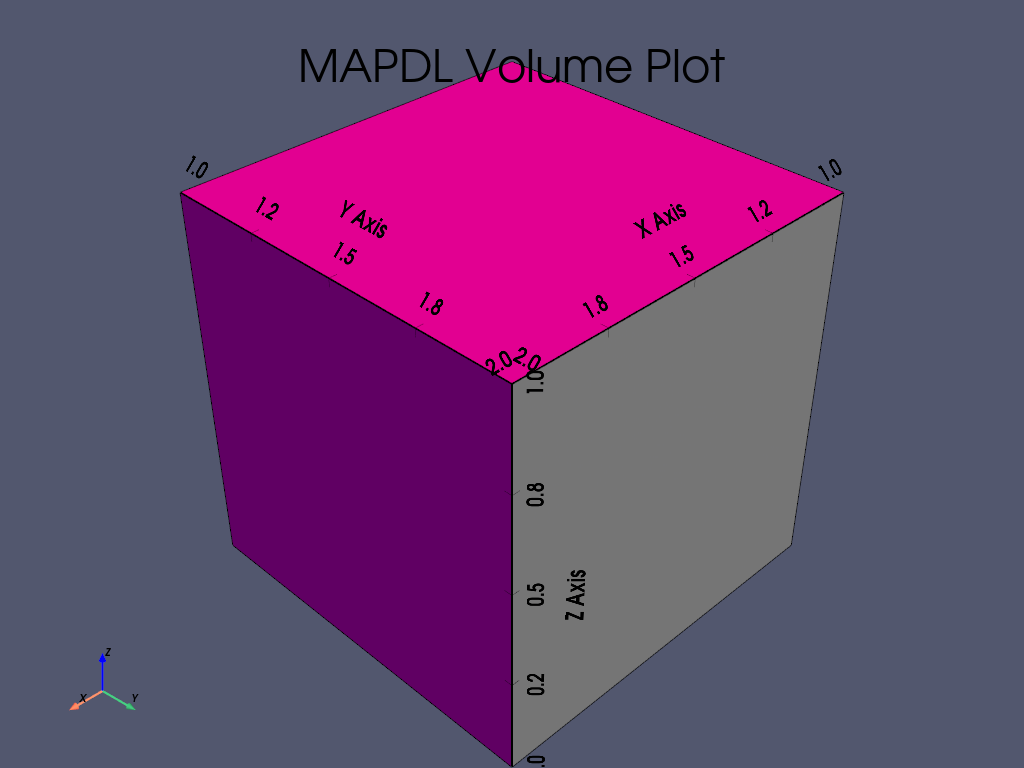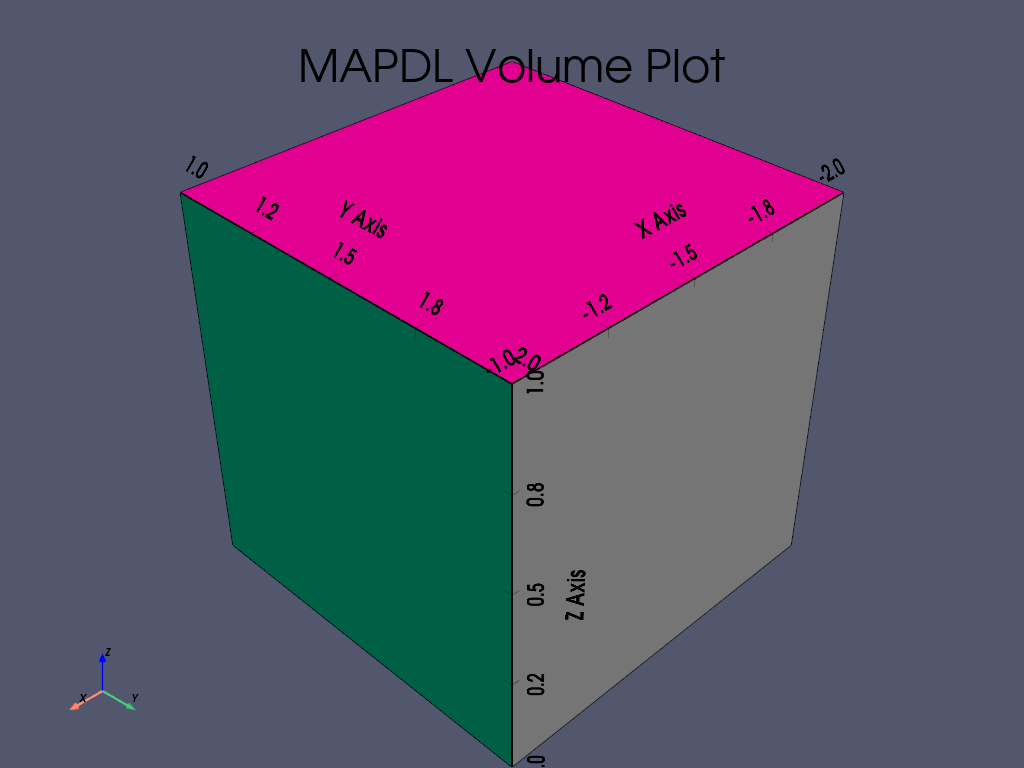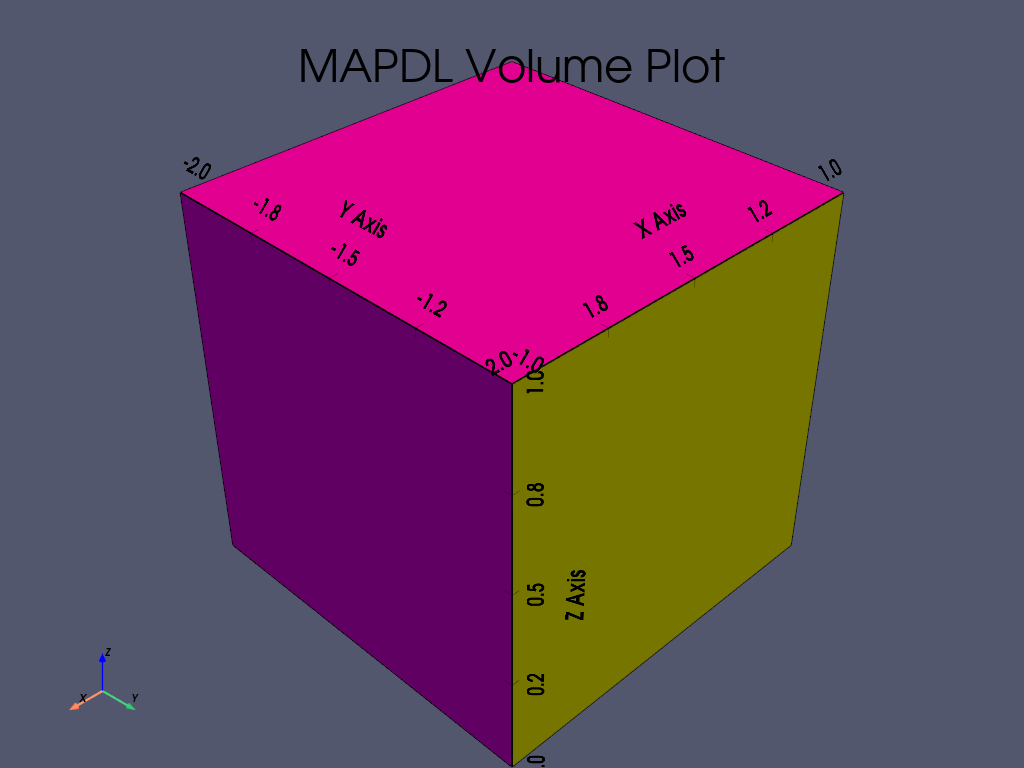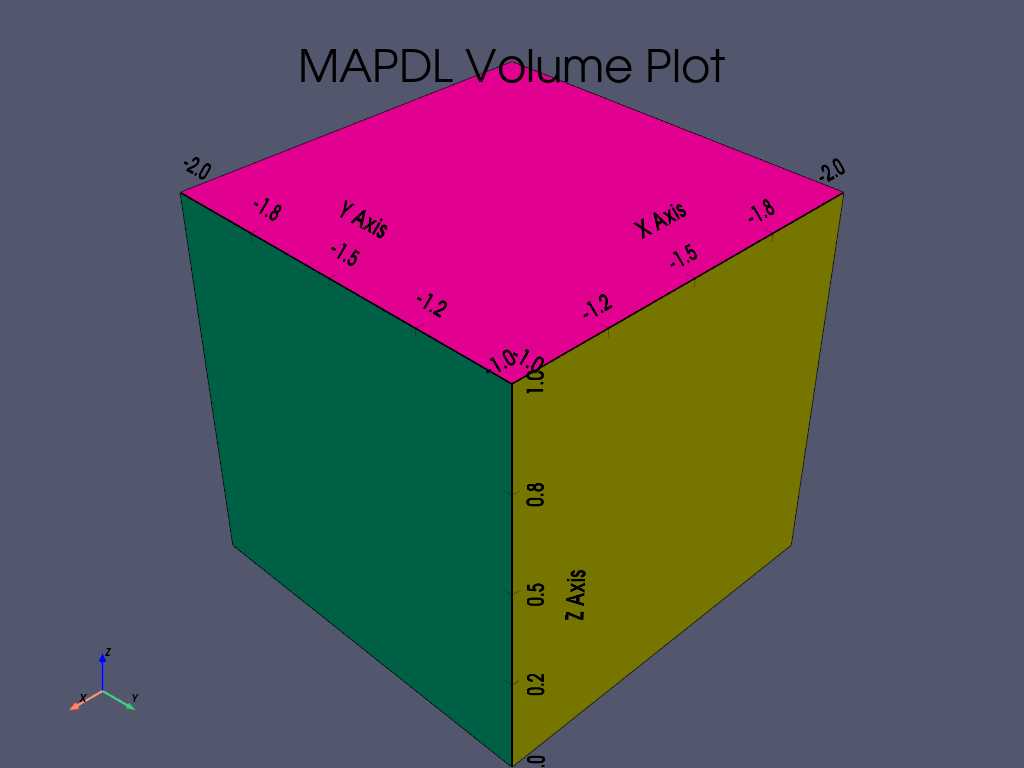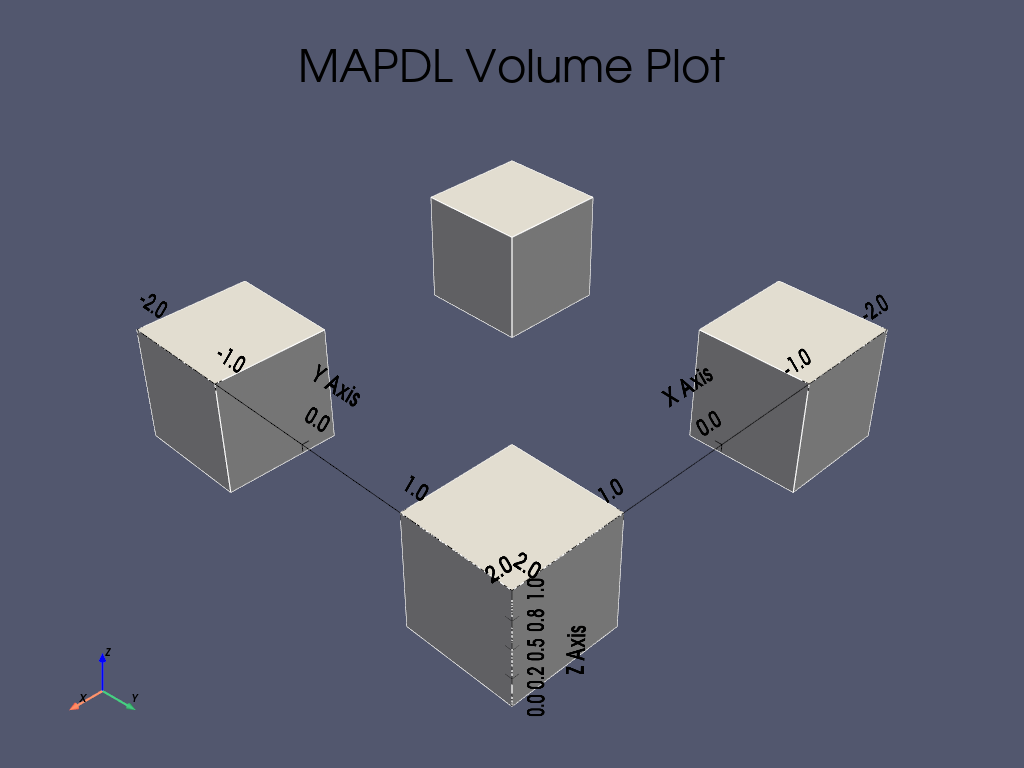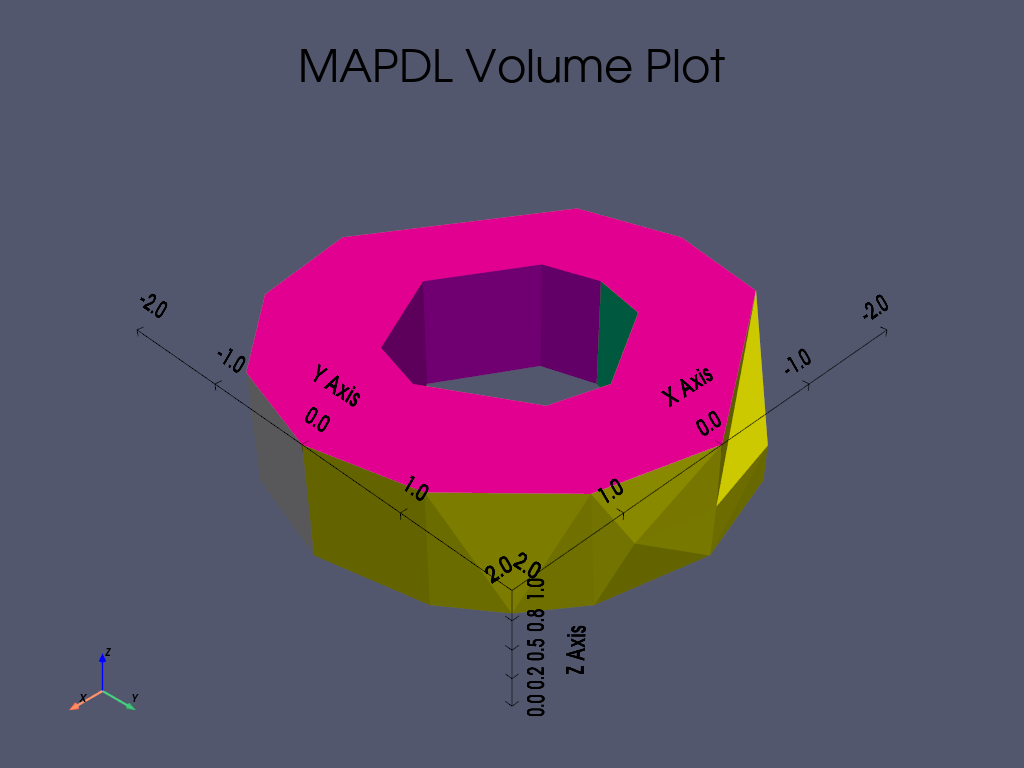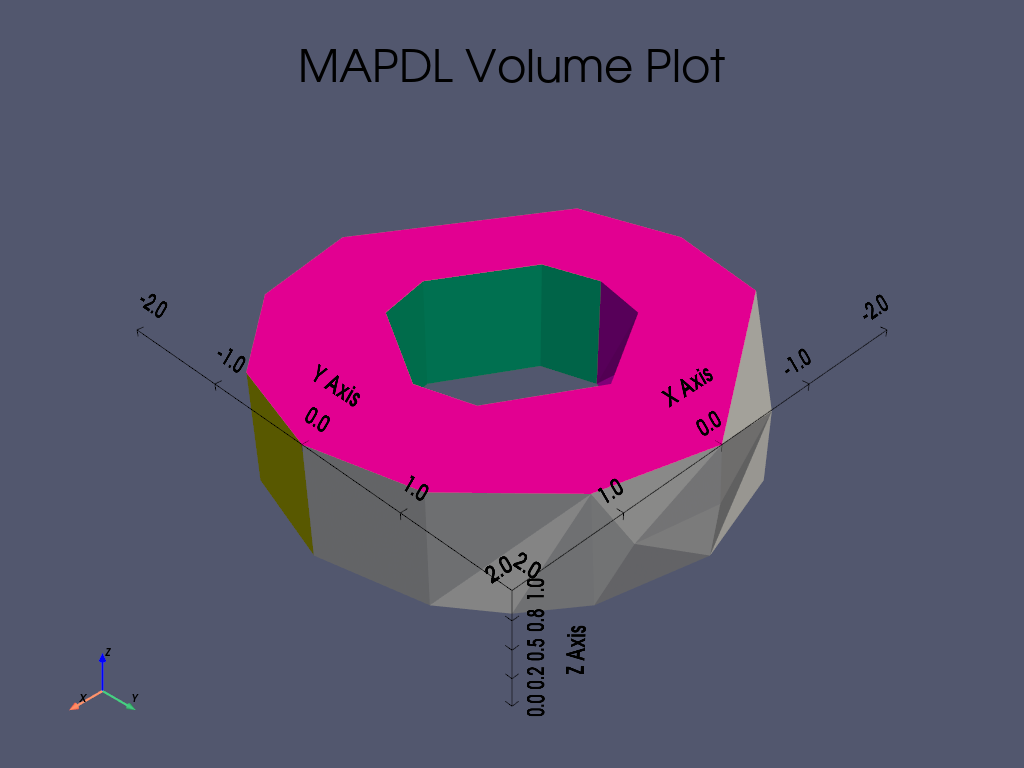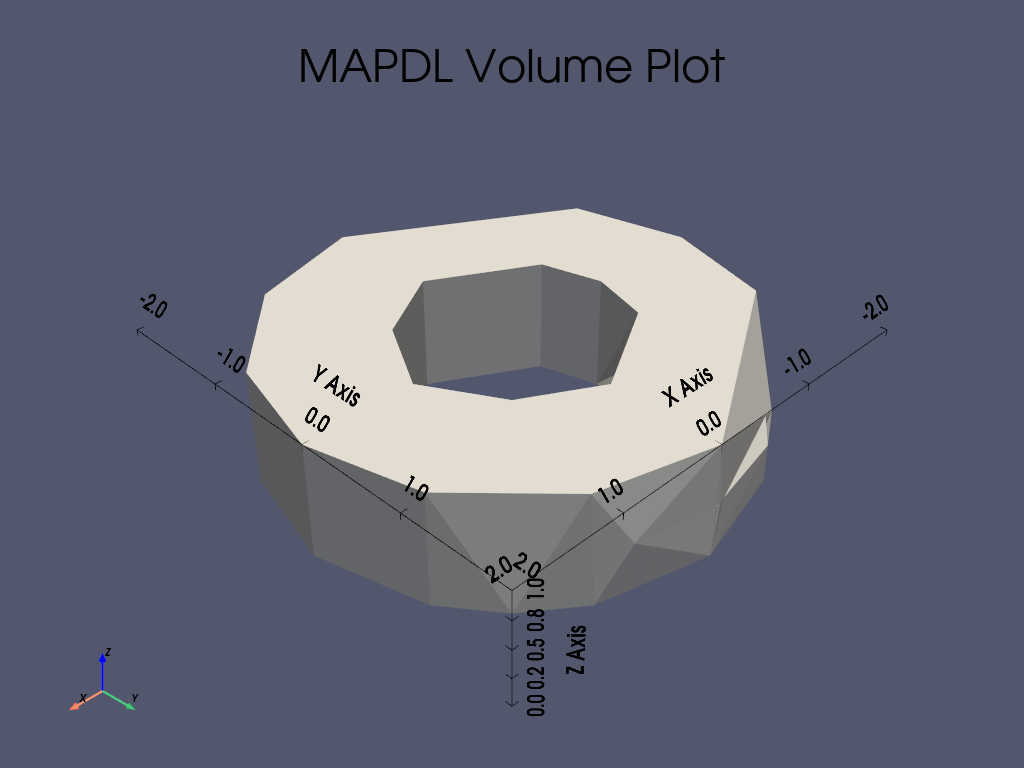Note
Go to the end to download the full example code
Volumes#
本例演示了如何使用体积命令创建基本几何体。
import numpy as np
from ansys.mapdl.core import launch_mapdl
# start MAPDL and enter the pre-processing routine
mapdl = launch_mapdl()
mapdl.clear()
mapdl.prep7()
print(mapdl)
Product: Ansys Mechanical Enterprise
MAPDL Version: 23.1
ansys.mapdl Version: 0.67.0
APDL Command: V#
通过关键点定义体积。
创建一个三棱柱体
mapdl.clear()
mapdl.prep7()
k0 = mapdl.k("", 0, 0, 0)
k1 = mapdl.k("", 1, 0, 0)
k2 = mapdl.k("", 1, 1, 0)
k3 = mapdl.k("", 0, 1, 0)
k4 = mapdl.k("", 0, 0, 1)
k5 = mapdl.k("", 1, 0, 1)
k6 = mapdl.k("", 1, 1, 1)
k7 = mapdl.k("", 0, 1, 1)
v1 = mapdl.v(k0, k1, k2, k2, k4, k5, k6, k6)
mapdl.vplot(show_lines=True)
Create a triangular prism
APDL Command: VA#
生成一个以现有 area 为边界的体积。
创建一个以 4 个 area 为边界的简单四面体
mapdl.clear()
mapdl.prep7()
k0 = mapdl.k("", -1, 0, 0)
k1 = mapdl.k("", 1, 0, 0)
k2 = mapdl.k("", 1, 1, 0)
k3 = mapdl.k("", 1, 0.5, 1)
# create faces
a0 = mapdl.a(k0, k1, k2)
a1 = mapdl.a(k0, k1, k3)
a2 = mapdl.a(k1, k2, k3)
a3 = mapdl.a(k0, k2, k3)
# 生成并绘制体积
vnum = mapdl.va(a0, a1, a2, a3)
mapdl.aplot(show_lines=True, show_bounds=True)
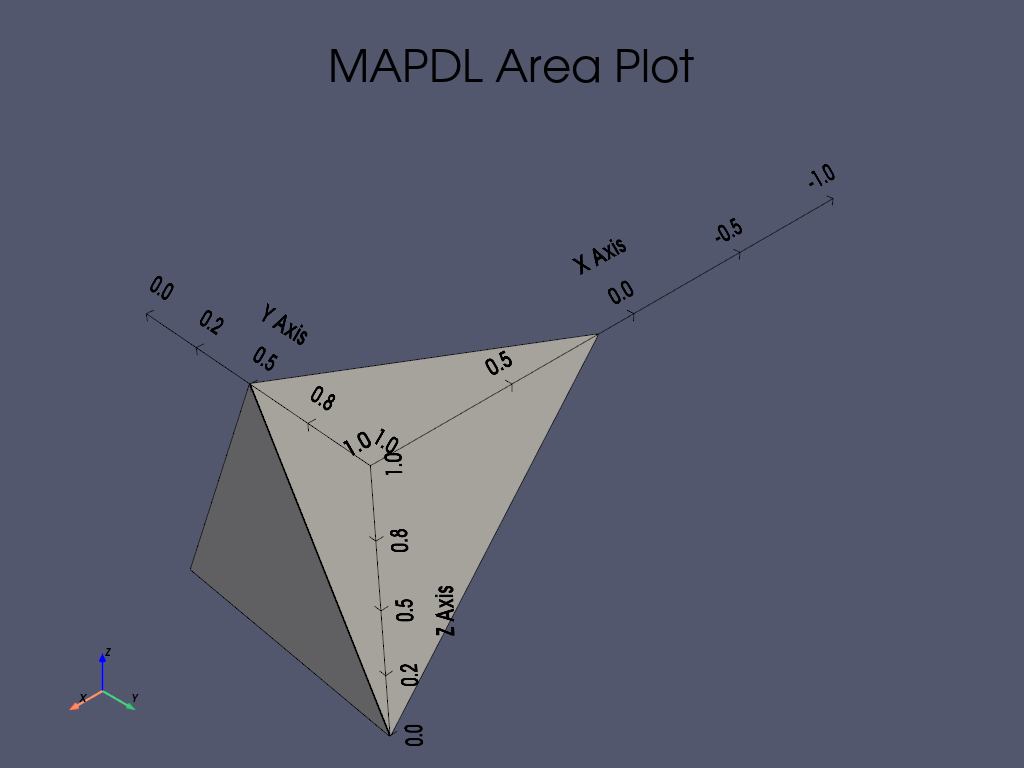
APDL Command: VDRAG#
通过沿路径拖动 area 生成体积。
创建一个带孔的正方形,然后沿弧线拖动。
mapdl.clear()
mapdl.prep7()
# 创建一个带孔的正方形。
anum0 = mapdl.blc4(0, 0, 1, 1)
anum1 = mapdl.blc4(0.25, 0.25, 0.5, 0.5)
aout = mapdl.asba(anum0, anum1)
k0 = mapdl.k("", 0, 0, 0)
k1 = mapdl.k("", 1, 0, 1)
k2 = mapdl.k("", 1, 0, 0)
l0 = mapdl.larc(k0, k1, k2, 2)
mapdl.vdrag(aout, nlp1=l0)
mapdl.vplot(show_lines=True, quality=5)
APDL Command: VEXT#
通过拉伸 area 生成其他体积。
挤出一个圆,创建一个基本圆柱体。
使用 rx 和 ry 参数创建锥形圆柱体。
mapdl.vdele("all")
mapdl.vext(a0, dz=4, rx=0.3, ry=0.3, rz=1)
mapdl.vplot(show_lines=True, quality=5)
APDL Command: VROTAT#
通过绕轴旋转面积图案生成圆柱体积。
围绕 Z 轴旋转一个圆,创建一个环形图案
mapdl.clear()
mapdl.prep7()
# 首先,从圆创建一个 area
hoop_radius = 10
hoop_thickness = 0.5
k0 = mapdl.k("", hoop_radius, 0, 0)
k1 = mapdl.k("", hoop_radius, 1, 0)
k2 = mapdl.k("", hoop_radius, 0, hoop_thickness)
carc0 = mapdl.circle(k0, 1, k1)
a0 = mapdl.al(*carc0)
# define a Z-axis
k_axis0 = mapdl.k("", 0, 0, 0)
k_axis1 = mapdl.k("", 0, 0, 1)
# 围绕 Z 轴旋转。默认情况下,它将旋转 360 度
mapdl.vrotat(a0, pax1=k_axis0, pax2=k_axis1)
mapdl.vplot(show_lines=True, quality=5)
APDL Command: VSYMM#
通过对称反射从体积生成体积。
通过在 YZ 平面和 XZ 平面上反射单个图块,创建四个图块。
Volume IDs#
返回一个 volume 编号数组。
array([1, 2, 3, 4])
Volume Geometry#
可通过 geometry.volumes 方法访问体积几何图形。
volume_mesh = mapdl.geometry.volumes
volume_mesh
Volume Selection#
选择 volume 有两种方法,一种是旧的 “传统” 风格,另一种是新的风格。旧式方法对于那些熟悉现有 MAPDL 命令的人来说很有价值,而新式方法则适用于以 pythonic 方式选择 volume 。
此示例生成一系列随机 volume ,并选择它们
mapdl.clear()
mapdl.prep7()
def generate_random_volume():
start_x, start_y, height, width, depth = np.random.random(5)
mapdl.blc4(start_x * 10, start_y * 10, height, width, depth)
# create 20 random volumes
for _ in range(20):
generate_random_volume()
# Print the volume numbers
print(mapdl.geometry.vnum)
[ 1 2 3 4 5 6 7 8 9 10 11 12 13 14 15 16 17 18 19 20]
使用旧式命令每隔一个选择 volume 。
mapdl.vsel("S", "VOLU", "", 1, 20, 2)
print(mapdl.geometry.vnum)
[ 1 3 5 7 9 11 13 15 17 19]
使用新样式命令每隔一个选择 volume 。
请注意,在 MAPDL 中,Item ID 以 1 为基础,而 Python 范围以 0 为基础。
mapdl.geometry.volume_select(range(1, 21, 2))
print(mapdl.geometry.vnum)
[ 1 3 5 7 9 11 13 15 17 19]
以列表方式选择 volume
请注意,如果您想查看所选内容,可以``return_selected``。这在从现有 volume 重新选择时非常有用。
注意,这里也可以使用 numpy 数组。
[ 1 5 10 20]
APDL Command: VPLOT#
在显示关键点编号的同时绘制彩色 volume 图。
所有常见的绘图方法都有多种绘图选项。
mapdl.clear()
mapdl.prep7()
# 创建基本的几何演示
mapdl.cyl4(xcenter=0, ycenter=0, rad1=1, theta1=0, rad2=2, depth=1)
mapdl.vsymm("Y", "ALL")
# 在显示边界的同时进行绘图,并禁用额外的线条绘图。
mapdl.vplot(show_bounds=True, show_lines=False, quality=1)
mapdl.vplot(vtk=False)
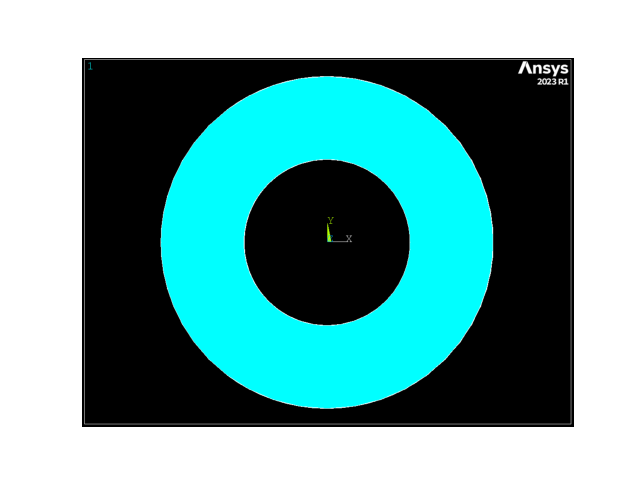
Stop mapdl#
mapdl.exit()
Total running time of the script: (0 minutes 15.294 seconds)
